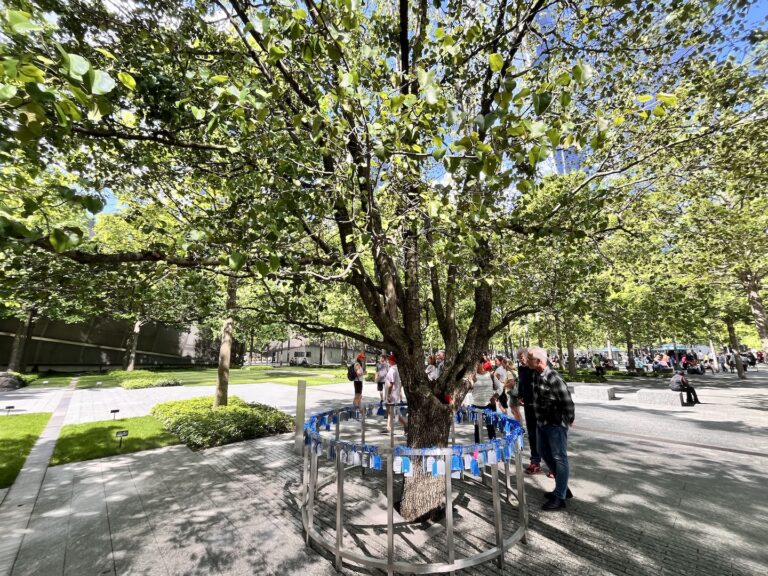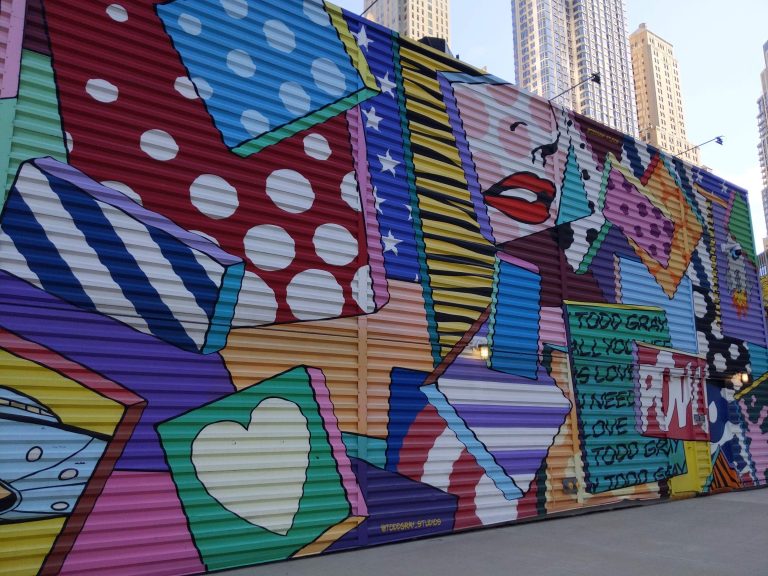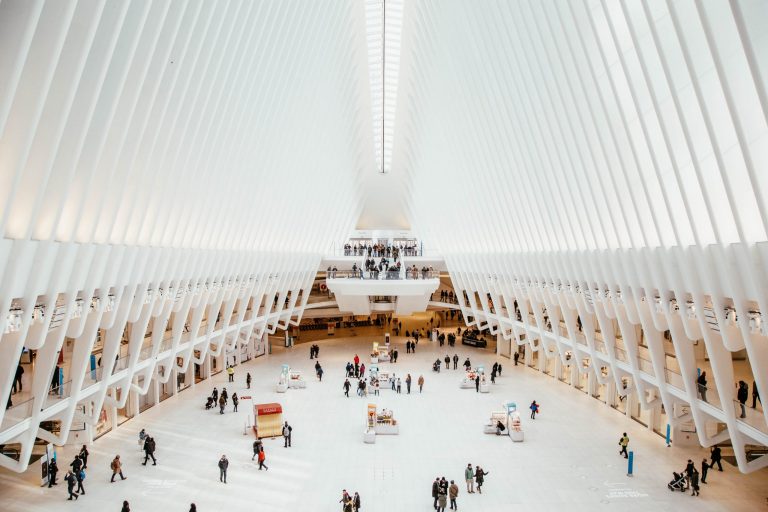The National September 11 Memorial is steeped in symbolism and meaning.
For example, the twin waterfall pools — each nearly one acre in size and built below ground level on the footprints of the twin towers — emphasize the absence of those buildings, which used to soar 110 stories into the sky.
The large stone monoliths of the Memorial Glade feature inlays of melted World Trade Center steel, symbolizing strength through adversity, according to the memorial.
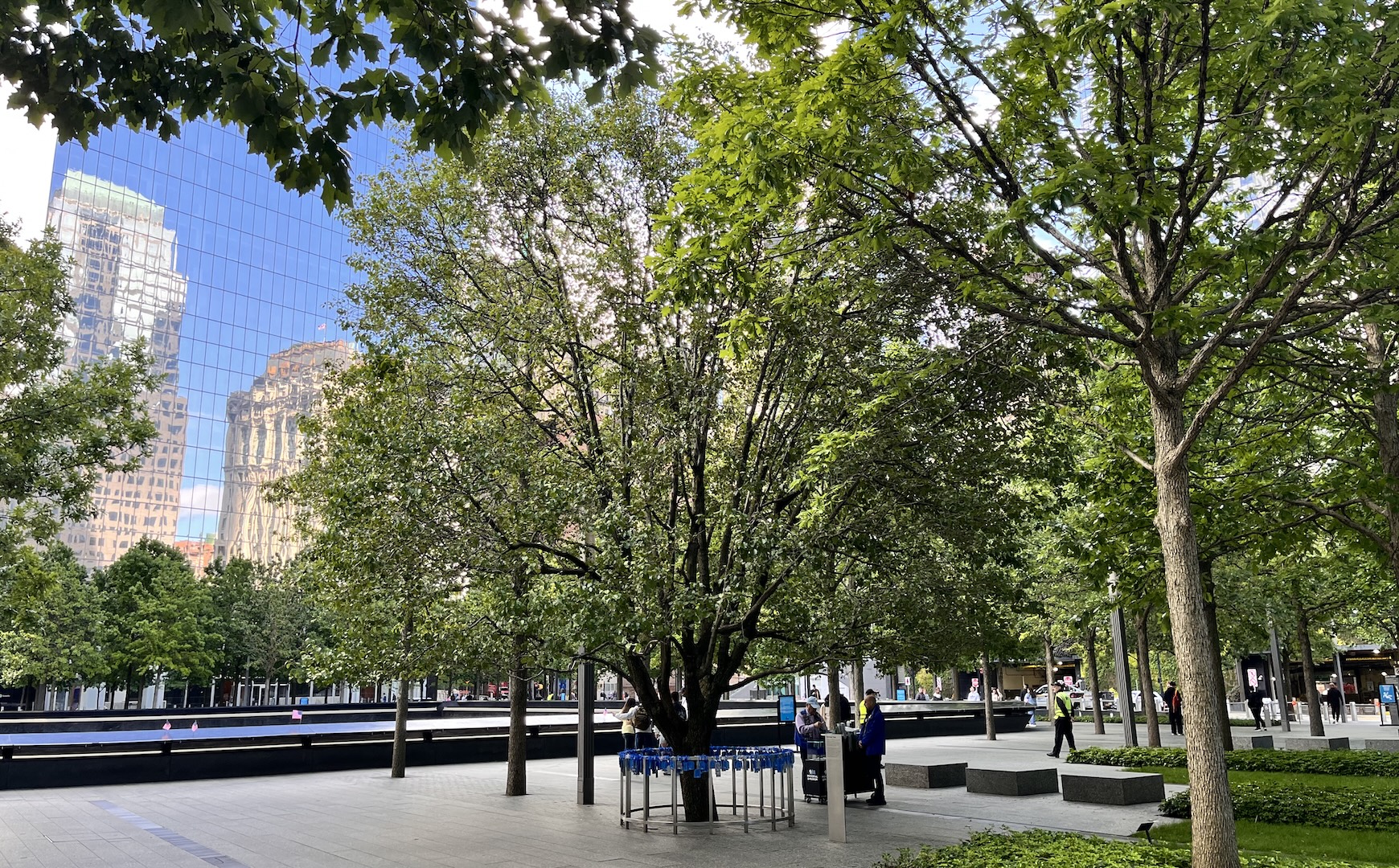
Credit: Arun Kristian Das
The more than 400 swamp white oak trees symbolize hope, renewal, and rebirth at the World Trade Center site.
And then we have the Survivor Tree.
As a guide on our top-rated Ground Zero and 9/11 Memorial Tour, I always bring my guests to see the Survivor Tree and hear about its journey, which is such an important chapter in the story of 9/11.
What is the 9/11 Survivor Tree?
Among the hundreds of trees on the memorial plaza, the Survivor Tree is unique. It is a Callery pear tree — the rest are swamp white oaks. Every spring, it is the first tree there to bloom. And it’s the only tree that predates 9/11 and actually came from the original World Trade Center site.
In fact, the Survivor Tree is the last living thing pulled from the rubble of the World Trade Center. Crews excavating the site discovered the severely damaged and burned tree in October 2001 and initially assumed it was dead. The roots were snapped. Branches were broken. Bark was burned.
Yet it also had signs of life, as Ronaldo Vega, the senior director of design at the 9/11 Memorial, explains in the above video.
“A branch right over here was poking out of the debris field, and it had given off some leaves,” he said. “Now, trees don’t give off leaves in October unless the tree is dying and wants to live. Unless the tree wants to show the world, ‘I still have life.’”
The New York City Parks and Recreation Department took custody of the tree, brought it to a nursery in Van Cortlandt Park in the Bronx, and worked hard to save it. By the following spring, the tree had recovered and bloomed with life.
It had endured catastrophe and survived.
History of the Survivor Tree at Ground Zero
The tree that came to be known as the Survivor Tree was originally among many Callery pear trees used to beautify Lower Manhattan. It lived inside a raised planter on Austin J. Tobin Plaza, the public square at the feet of the original towers, which is why it was buried when they collapsed. The tree’s exact origin and arrival at the site are unclear but the Parks Department believed it was a mature tree.
After 9/11, the recovered tree spent more than nine years at the nursery in the Bronx. Then in 2010, as the 9/11 Memorial Plaza was taking shape, a plan was made to bring the tree back to Lower Manhattan.
Crews carefully uprooted the Survivor Tree, loaded it onto a flatbed truck, and transported it to the memorial, where it was planted in a place of honor a few dozen feet west of the South Pool.
The 9/11 Museum is actually located under the memorial plaza, so the entire area is a kind of “rooftop” planter box — the Survivor Tree and the more than 400 swamp white oaks are planted in irrigated, aerated, and fertilized soil six feet deep under the plaza’s pavement, according to “The Trees,” a documentary film.
What is a Callery pear tree?
Callery pear trees are not native to North America. They were first imported from Asia in the early 1900s. The Bradford variety became a popular ornamental tree because it’s cheap, doesn’t produce fruit, blooms beautifully every spring, and is well-suited to urban and suburban public places, such as sidewalks, playgrounds, and parks.
Over many decades, New York City planted hundreds of Callery pear trees but no longer does because their branches are susceptible to breaking in strong winds and other severe weather. Also, many communities have stopped using Callery pears because they’re now considered invasive and can outcompete native plant life.
What the 9/11 Survivor Tree symbolizes
Although nearly 3,000 people tragically died on 9/11, many thousands of people survived thanks to bravery, sacrifice, kindness, and simple luck. That Callery pear tree was broken, bruised, and burned but wanted to live. It not only survived but it continues to live and thrive, like so very many people in New York and everyone else touched by 9/11.
So the Survivor Tree pays tribute to all of them.
“Today, the tree stands as a living reminder of resilience, survival, and rebirth,” according to the 9/11 Memorial.
What to expect when you visit
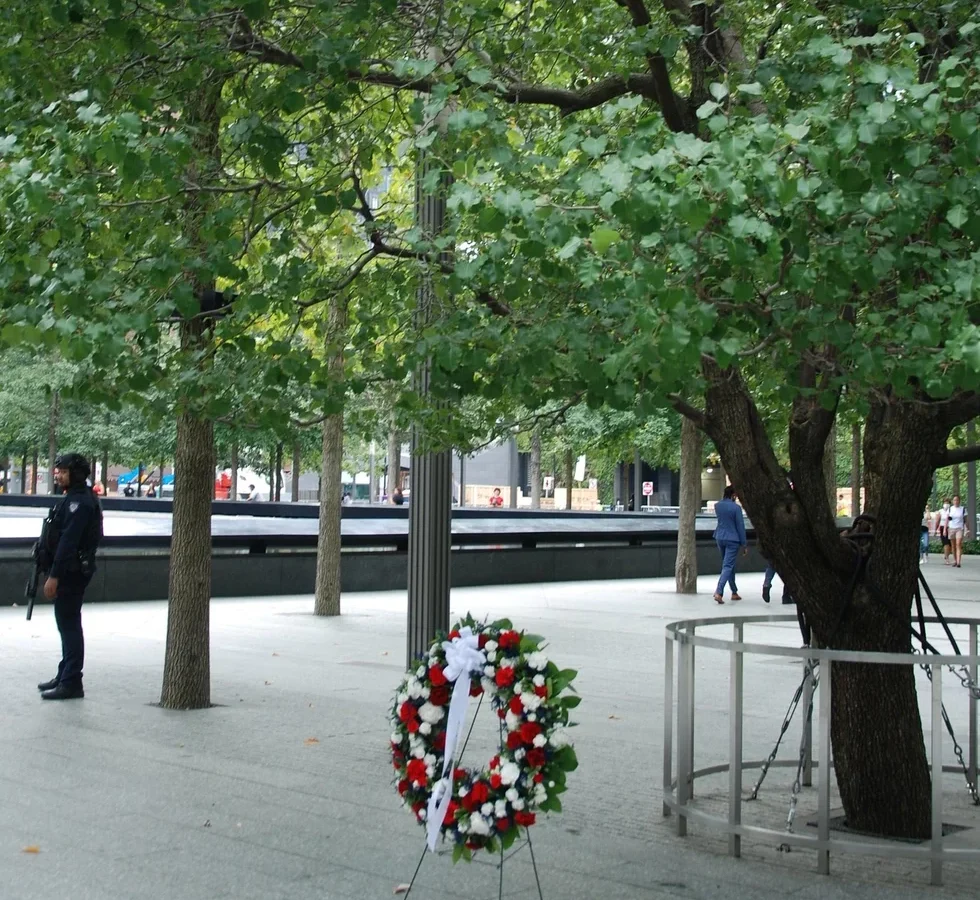
Credit: National Guard photo
The Survivor Tree is a special part of the overall memorial plaza, so the area is often very busy with visitors, memorial staff, special guests conducting wreath-laying ceremonies, and even squirrels, which are often seen scurrying up its trunk and along its branches.
The damaged and broken tree was barely eight feet tall when it was pulled from the WTC rubble. It now stands more than 30 feet tall and easily catches your eye.
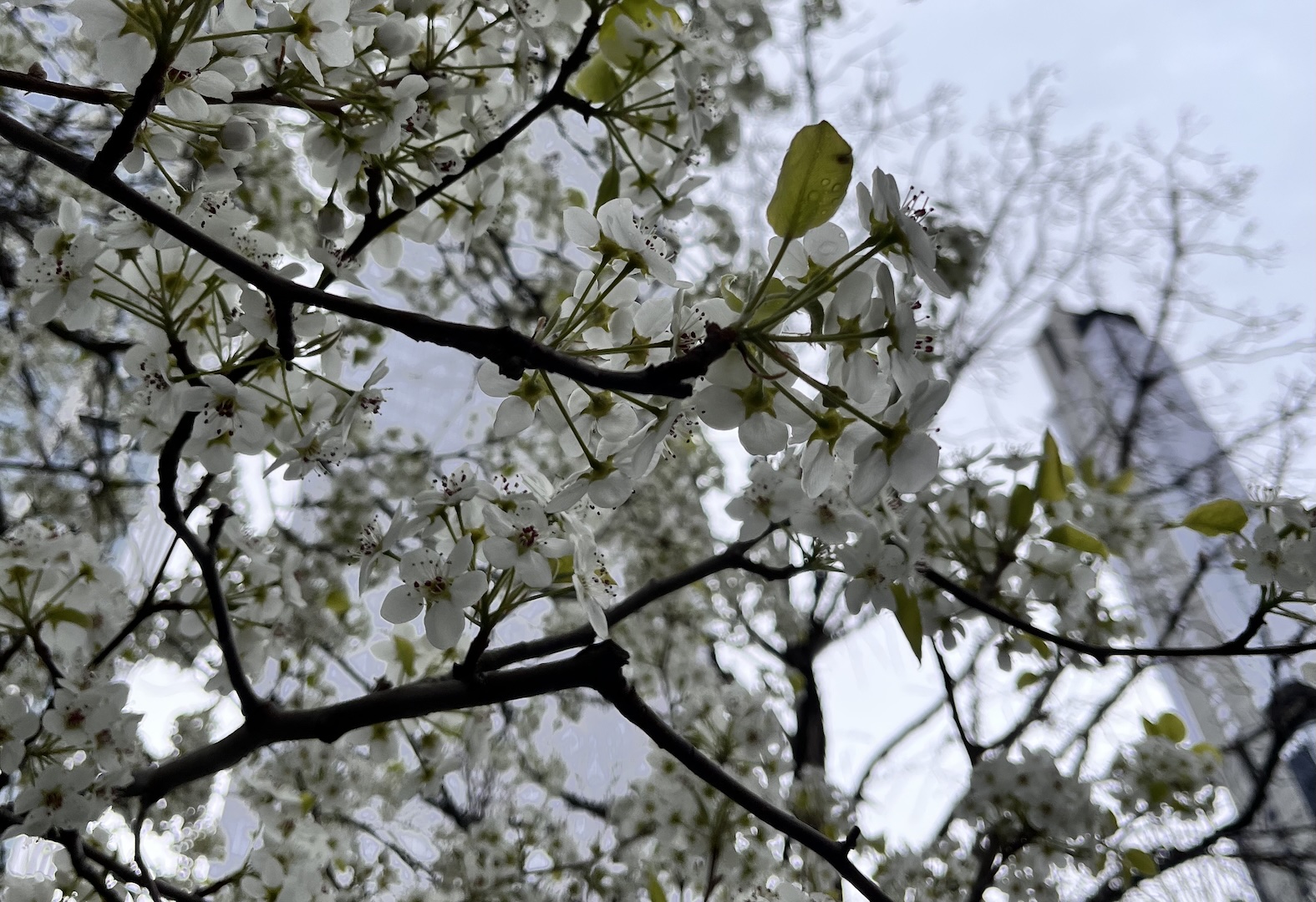
Credit: Arun Kristian Das
The tree blooms with beautiful small white flowers every spring — you can view peak blossoms in late March to mid-April. By May, the tree is lush with greenery. In the fall, you can appreciate the tree’s reddish-purple leaves.
In winter, you’ll see metal cables looped around the tree to give it added strength and stability to survive New York’s often harsh winters. The area around the 9/11 Memorial is just a few hundred feet from the Hudson River and surrounded by tall buildings — it can experience brutal wind chills magnified by Manhattan’s so-called wind tunnel effect.
The Survivor Tree’s connections to other communities
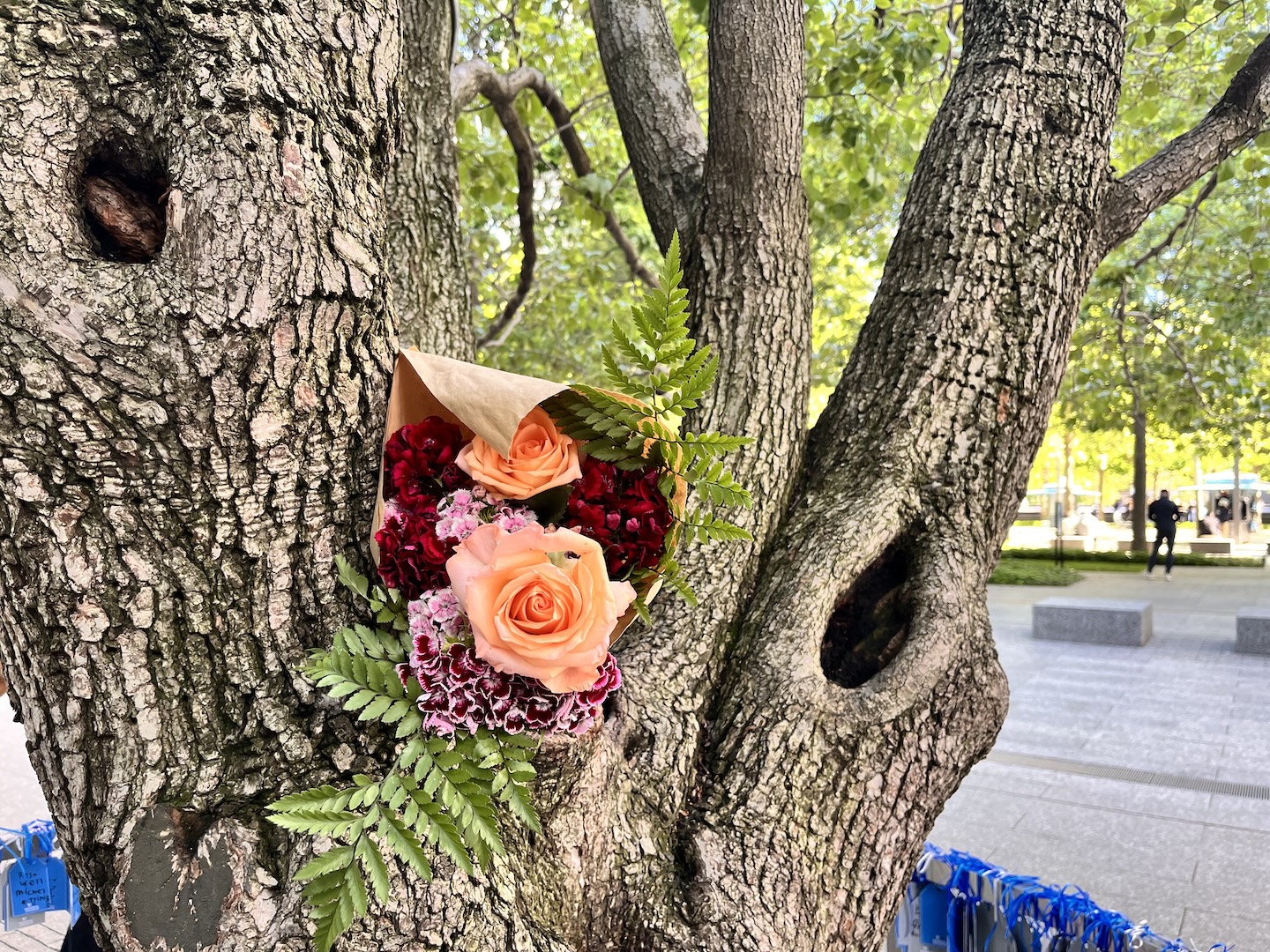
Credit: Arun Kristian Das
The meaning and impact of the 9/11 Survivor Tree reaches far beyond New York City. The tree is connected to dozens of communities around the world through the 9/11 Memorial Seedling Program, a partnership with Bartlett Tree Experts of Connecticut and John Bowne High School in New York. Each year from 2013-2023, the program selected three three communities affected by either mass violence or natural disasters to receive tree seedlings taken from the Survivor Tree.
Some of the communities that have committed to nurturing the trees include Las Vegas, where a gunman killed 58 people at a music festival; Puerto Rico, which was devastated by Hurricane Maria; Newtown, Connecticut, in honor of the 26 people killed in a mass shooting at Sandy Hook Elementary School; and London, England, in memory of the victims of a devastating apartment tower fire.
The seedling program has been suspended because, as I mentioned, the Callery pear is considered invasive in certain parts of the country and around the world.
Paying your respects
Spending time at the 9/11 Memorial is somber, moving, and powerful. And going with one of our guides really enhances the experience. Your local guide (whether yours truly or another New Yorker who experienced 9/11) will introduce you to each element of the plaza, including the Survivor Tree, so you can truly understand the symbolism and messages of the memorial. Learn about our Ground Zero tour options.
You will come away with a real appreciation for the magnitude of what happened on 9/11 and how it changed our city and country.
And you’ll never forget.

